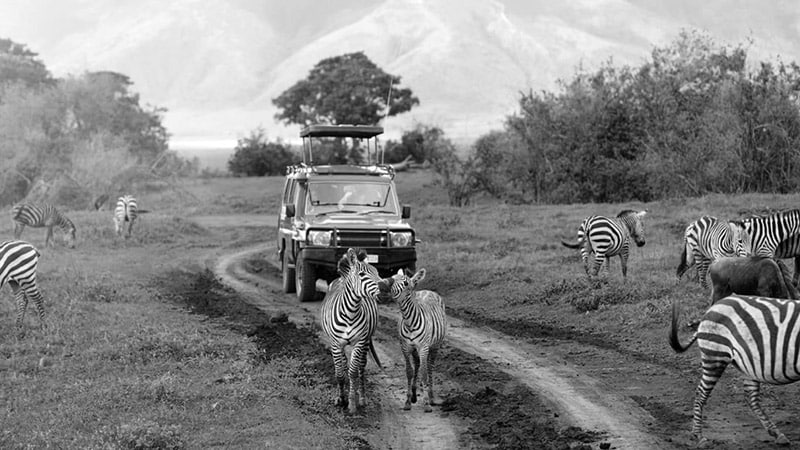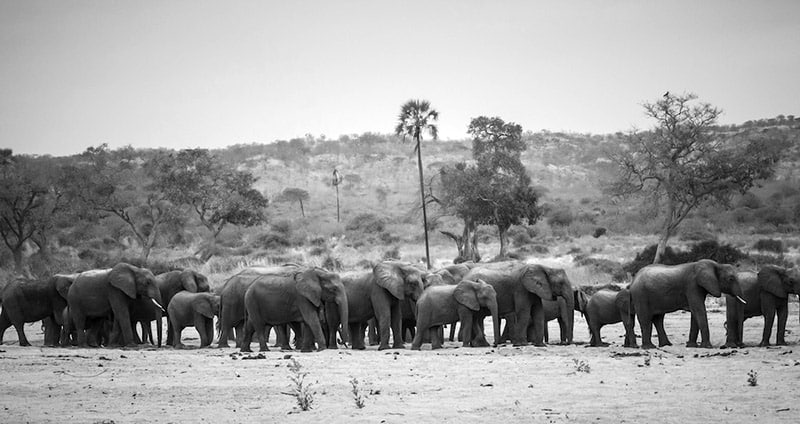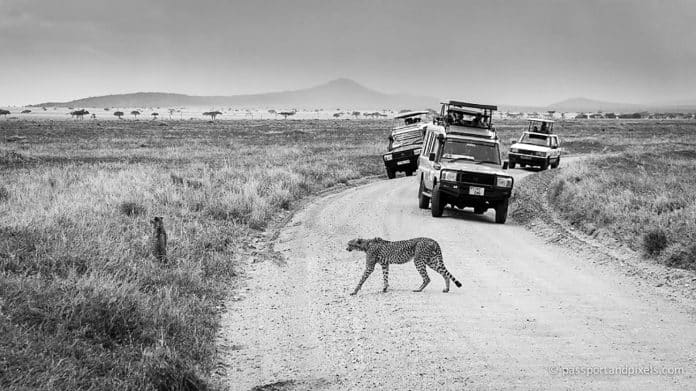Best Time of Year for Safari in Tanzania: A Comprehensive Guide
Planning a safari in Tanzania? One of the most important considerations is choosing the best time of year for African safari Tanzania has available. Tanzania offers diverse wildlife, stunning landscapes, and unforgettable experiences, but the timing of your safari can greatly impact your overall experience. In this comprehensive guide, we will explore the different seasons in Tanzania, highlighting the best, cheapest, least busy, and worst times for a safari. Let’s dive in and discover the perfect time to embark on your Tanzanian adventure!
Understanding Tanzania’s Seasons
Tanzania experiences two main seasons: the dry season and the wet season. The dry season, also known as the high season, runs from June to October, while the wet season, or low season, occurs from November to May. Each season has its own unique characteristics and offers distinct advantages and disadvantages for safari-goers. Let’s explore the best time of year to go on safari in Tanzania based on these seasons:
The Dry Season: Best Time of Year for Tanzania Safari Wildlife Viewing
The dry season, which spans from June to October, is widely regarded as the best time for a safari in Tanzania. During this period, the weather is dry, temperatures are comfortable, and wildlife viewing opportunities are abundant. The dry season is also the peak tourist season, so it’s important to plan and book in advance to secure your spot.
In July to September, Tanzania experiences its driest weather, making it the overall best time for a safari. The lack of rainfall allows for clearer skies and easier animal spotting. During this time, wildlife congregates around water sources, providing excellent opportunities to witness the famous “Big Five” game (elephants, lions, leopards, buffalo, and rhinos) and other fascinating African wildlife.
The Wet Season: Unique Experiences and Budget-Friendly Safaris
The wet season in Tanzania occurs from November to May, bringing abundant rainfall and transforming the landscape into lush greenery. While the wet season may not be the ideal time for wildlife viewing, it offers its own unique experiences and advantages.
Cheapest Time for a Safari: November to March
The wet season, particularly from November to March, is the cheapest time to go on a safari in Tanzania. During this period, safari prices are lower, and there are fewer crowds, allowing for a more intimate and budget-friendly experience. However, it’s important to note that wildlife viewing may be more challenging due to taller grasses and greener landscapes.

Least Busy Time: March to May
If you prefer a quieter and more secluded safari experience, the least busy time best time of year to safari in Tanzania for that particular reason is from March to May. This period, known as the “long rains,” sees fewer tourists, making it an ideal time for those seeking a more peaceful and exclusive adventure. However, be prepared for hot and muddy conditions, as this is the rainiest time of year in Tanzania.
The Worst Time: November to December
While the wet season has its advantages, November to December is considered the worst time for a safari in Tanzania. During this period, known as the “short rains,” the weather is hot, rainy, and the tall grasses and lush greenery make it difficult to spot wildlife. However, if you can tolerate the conditions, you may enjoy lower prices, fewer crowds, and the chance to witness baby animals in their natural habitat.
Wildlife Highlights in Tanzania
Tanzania is renowned for its incredible wildlife and diverse landscapes. From the vast plains of the Serengeti National Park to the majestic Mount Kilimanjaro, there are plenty of opportunities to encounter iconic African animals and experience the wonders of nature. Here are some of the wildlife highlights you can expect during your Tanzanian safari:
Serengeti National Park: Home to the Great Wildebeest Migration
Serengeti National Park is a must-visit destination for wildlife enthusiasts. It is home to the Great Wildebeest Migration, one of the most spectacular natural events on Earth. Each year, millions of wildebeest, zebras, and other herbivores migrate across the Serengeti in search of fresh grazing grounds. This awe-inspiring spectacle attracts predators such as lions, cheetahs, and crocodiles, making it an ideal time to witness dramatic wildlife interactions.
Kilimanjaro National Park: Africa’s Highest Mountain
Tanzania is also home to Mount Kilimanjaro, the highest mountain in Africa. While Kilimanjaro can be climbed year-round, the best time for a trek is during the dry season from June to October and January to February. During these months, the weather is generally dry, and the skies are clear, providing breathtaking views of the surrounding landscapes. It’s important to note that climbing Kilimanjaro requires proper preparation, physical fitness, and acclimatization.
Tarangire National Park: A Haven for Elephants
Tarangire National Park is renowned for its vast elephant herds and diverse birdlife. The best time to visit Tarangire is during the dry season, from June to October, when animals gather around the Tarangire River, providing excellent opportunities for wildlife viewing. During this time, you can witness large herds of elephants, as well as other animals such as giraffes, zebras, and various antelope species.

What to Pack for Your Tanzanian Safari
Packing the right gear and essentials is crucial for a successful and comfortable safari experience. Here are some items you should consider packing for your Tanzanian adventure:
1. Clothing: Prepare for Varied Weather Conditions
Tanzania’s weather can be unpredictable, so it’s essential to pack layers of clothing to adapt to changing temperatures throughout the day. Include lightweight and breathable clothing, long-sleeved shirts, pants, a light rain jacket, and a hat to protect yourself from the sun. Additionally, pack comfortable walking shoes or hiking boots for game drives and nature walks.
2. Sun and Bug Protection: Stay Safe and Comfortable
Protecting yourself from the sun and insects is crucial during a safari. Pack sunscreen with a high SPF, sunglasses, a wide-brimmed hat, and lightweight, long-sleeved clothing to shield yourself from the sun’s rays. Don’t forget to bring insect repellent to ward off mosquitoes and other insects.
3. Binoculars and Camera: Enhance Your Wildlife Viewing
To fully appreciate the wildlife and capture memorable moments, pack a pair of binoculars and a camera with extra batteries and memory cards. Binoculars will allow you to get a closer look at distant animals and appreciate their beauty and behavior, while a camera will enable you to document your safari experience.
4. Medications and First Aid Kit: Be Prepared for Emergencies
It’s essential to bring any necessary medications, including malaria prophylaxis if recommended by your healthcare provider. Additionally, pack a basic first aid kit with essentials such as bandages, antiseptics, pain relievers, and any personal medications you may need. It’s always better to be prepared for minor injuries or illnesses during your safari.
5. Travel Documents and Cash: Stay Organized and Ready
Before embarking on your safari, ensure you have all the necessary travel documents, including your passport, visas, and travel insurance. It’s also wise to carry a photocopy of your passport and other important documents in case of loss or theft. Don’t forget to bring some cash in both Tanzanian shillings and US dollars for tips, park fees, souvenirs, and other expenses.
6. Miscellaneous: Other Essential Items
Other items to consider packing include a daypack for carrying your essentials during game drives, a reusable water bottle to stay hydrated, a flashlight or headlamp for nighttime activities, and a travel adapter to charge your electronic devices.
Frequently Asked Questions
1. What is the best month to go on a safari in Tanzania?
The Tanzania safari best time of year basing on months is highly dependent on your preferences and priorities. However, July is often considered the best month due to the dry weather, excellent wildlife viewing opportunities, and the chance to witness the Great Wildebeest Migration in the Serengeti.
2. Is the wet season a good time for a safari in Tanzania?
While the wet season may not be ideal for wildlife viewing, it offers unique experiences and advantages such as lower prices, fewer crowds, and lush green landscapes. If you don’t mind the occasional rain and are interested in birding or exploring Tanzania’s cultural aspects, the wet season can be a rewarding time for a safari.
3. How do I choose the best safari package in Tanzania?
Choosing the best safari package in Tanzania depends on your budget, interests, and preferences. Consider factors such as the duration of the safari, accommodations, activities, and the reputation and expertise of the tour operator. Research and compare different options, read reviews, and consult with travel experts to find the package that suits your needs.
4. What should I expect during game drives in Tanzania?
During game drives, you can expect to explore the national parks in open 4×4 vehicles with experienced guides. Your guide will navigate through the park, pointing out wildlife, sharing interesting facts, and ensuring your safety. Game drives typically take place early in the morning and late in the afternoon when animals are most active. Remember to follow your guide’s instructions and respect the wildlife and their natural habitat.
5. Can I combine a safari in Tanzania with other activities or destinations?
Absolutely! Tanzania offers a wealth of opportunities to combine your safari adventure with other activities or destinations. Consider exploring the pristine beaches of Zanzibar or the idyllic islands of Mafia and Pemba after your safari. You can also visit cultural sites like Stone Town, engage in community-based tourism, or embark on a hiking expedition to Mount Kilimanjaro. The possibilities are endless!
Conclusion
Choosing the best time of year for a safari in Tanzania is an important decision that will greatly impact your experience. Whether you prefer the dry season for optimal wildlife viewing or the wet season for unique experiences and budget-friendly options, Tanzania offers something for everyone. Consider your priorities, interests, and budget when planning your safari adventure, and don’t forget to pack the essentials for a comfortable and memorable trip. Embark on your Tanzanian safari and create lifelong memories as you witness the beauty of African wildlife in its natural habitat.
For more articles related to Tourism in Tanzania, click here!

































